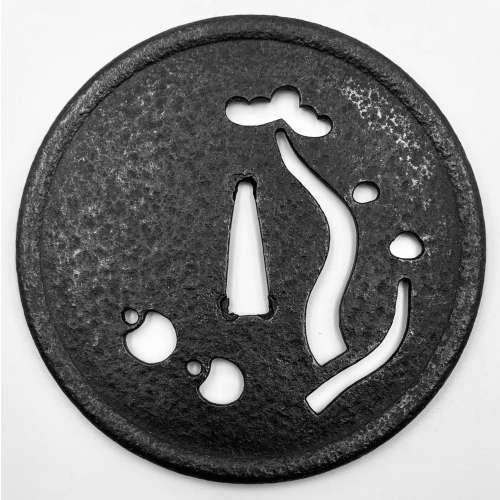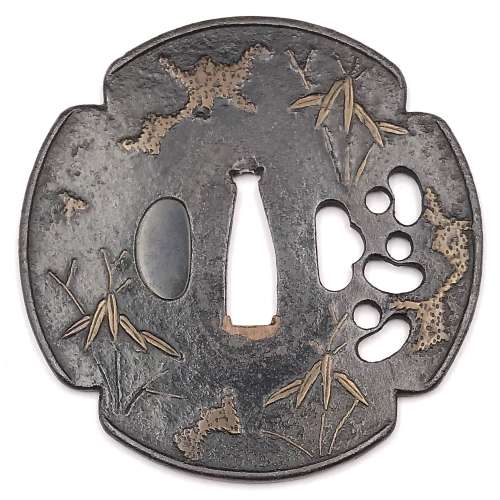
The Henry D. Rosin Collection №9.

Lundgren Collection №7.


The Henry D. Rosin Collection №9.

Lundgren Collection №7.

Iron tsuba of round form inlaid with brass and shakudo (suemon-zōgan) with a design of tendrils, leaves, double gourds, and folding fan with two wild geese on the face and the same design only with a fan with two interlocked rings (wachigai) on the back. Design is supplemented with a round family crest (mon) of three fans in openwork (sukashi). Hitsu-ana and the mon are outlined with brass rope. Copper sekigane.
Some attribute such tsuba as belonging to Heianjō or even Yoshirō School, and date them to Momoyama period. I keep this piece under Ōnin rubric, late Muromachi, but this is just a question of personal preference.Some inlay is missing, some repaired; traces of rust. Otherwise - decent condition.
Late Muromachi period (1514-1573). Size: 77.4 x 77.1 x 3.8 (center), 3.2 (rim) mm
Iron tsuba of circular form with design of pine trees (matsu) and monkey toys (kukurizaru) in openwork (ko-sukashi). Ko-Katchushi school.
Raised rim (mimi) with iron bones (tekkotsu). Size: Diameter: 99.5 mm; Thickness: 2.1 mm at centre; 4.3 mm at the rim.Early Muromachi period: 15th century (Kakitsu - Bun'an era, 1441 - 1449).
